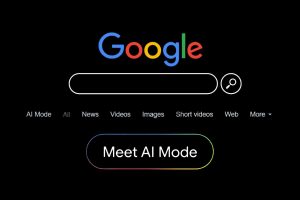The success of digital transformation depends heavily on the cloud. DevOps in the cloud offers greater leeway and agility than on-premises settings, allowing businesses to shorten the software development life cycle (SDLC) and provide higher-quality end results. However, designing for the cloud from the bottom up will provide better results than merely transferring conventional apps to a cloud architecture. In this article, we’ll explore the differences between cloud-enabled and cloud-native apps and explain why they’re important.
Cloud Applications: Getting Down to Basics
Let’s take a look at the fundamentals before diving into the specifics of cloud-native vs. cloud-based applications and the primary distinctions between the two, as well as the advantages and downsides of each and how they may be more or less efficient for businesses.
The word “cloud” is often used to describe an online data center where users may upload and access their data and programs.
Therefore, a cloud application is a user-facing software that is hosted in the cloud and used to perform tasks such as storing or processing data.
Even if the user interface of the app is shown via a mobile app or web browser, all of the program’s core functionality, including data storage, is handled in the cloud. Companies in the private sector have found these “cloud” apps, which can be accessed from any internet-connected device, to be particularly appealing.
There are many different kinds of cloud apps, each corresponding to a different development strategy. Two of these broad classes, cloud-native and cloud-based, are the focus of today’s conversation.
What Does Cloud Enabled Mean?
An application that can run on the cloud first saw life in a conventional data center. It’s often a monolithic program, meaning it’s built and released as one cohesive piece. Until it is moved to a public cloud, a cloud-enabled application will often rely on on-premises resources and infrastructure. In most cases, the application’s design is modified so that it works with virtual hardware and cloud networking setups, but the fundamental architecture continues to be the same. The software is moved from a conventional server farm to a public cloud.
How Does Cloud Native Work?
Meanwhile, a cloud-native app is built from the ground up to operate in the cloud. The most effective use of cloud resources necessitates that cloud-native apps use a microservices-based design. To accomplish a common purpose, microservices divide a bigger service or application into a set of smaller, self-sufficient parts. Each microservice consumes just what it needs to function well. As the need for a service increases (or decreases), microservices have the ability to scale on their own.
Comparing Cloud Enabled vs. Cloud Native
Let’s compare cloud-native apps’ scalability, cost, performance, and dependability to those of cloud-enabled applications.
Scalability
The scalability of cloud-enabled apps and resources is inferior to that of cloud-native ones.
A cloud-enabled monolith app is built for use with a single virtual machine. There must be an increase in the machine’s storage capacity, computation power, RAM, etc. if it is to be scaled. We call this procedure “scaling up,” and it’s both labor- and money-intensive. Reducing costs by eliminating resources is laborious and often results in no net savings beyond the value of the removed materials that may be reused in another system.
A cloud-native microservices app, on the other hand, is installed on a group of computers that share a common pool of resources. It’s called “scaling out” when more resources are added to meet rising demand. Manual scaling is possible with a few clicks and an agreed-upon increase in the monthly fee but is often handled automatically. If using drops, it’s easy to reduce cloud-native resources and save money.
Cost
As such, it’s important to weigh the expenses associated with cloud-enabled vs cloud-native apps.
There are a number of reasons why it may cost extra to create, transfer, and manage cloud-enabled apps. In the first place, building apps that can run in the cloud need costly on-premises hardware and software licenses. Adding or altering microservices is considerably easier and faster than adding or changing a monolith. This implies more money will be spent on updates, fixes, and migrations since more time and effort will have to be spent by developers working on them.
Costs associated with using cloud-native apps are often lower. With the aforementioned scalability options, you’ll only ever have to pay for the exact amount of resources that you use. You won’t need to spend money on or take care of any gear or software on your own premises since it’s all built for and on the cloud. Last but not least, a microservices design makes it simpler and quicker to implement changes, which in turn reduces the cost of development.
Performance and Reliability
Cloud-native apps outperform their cloud-enabled equivalents in terms of speed and reliability.
Cloud-enabled apps are more difficult to scale, making it tougher to handle sudden spikes in demand. Furthermore, software optimized for local servers may not function well in a cloud environment. Plus, since they are delivered as a single massive codebase, any errors or failures are more likely to impact the whole program in a monolithic project.
If demand suddenly increases, cloud-native resources can scale out to meet it, and if it suddenly decreases, they can scale back in to save money. When built using microservices, an application for the cloud-native architecture is optimized for the most effective use of cloud resources. Last but not least, cloud-native apps are more dependable because the containers and microservices they run on are decoupled from one another. This allows a broken pod to be removed and replaced without affecting the rest of the cluster.
Conclusion
There will be no quick fix for the problems caused by the rise of digital technology. When an organization is getting closer to fully adopting digital technologies, a cloud-native architecture may serve as a solid foundation for its digital transformation path. A new paradigm is emerging, one in which businesses turn to cloud computing service providers that can be modified to fit any use case. When businesses have access to a cloud-native architecture, they are better equipped to concentrate on their long-term goals and take advantage of lucrative expansion prospects.












